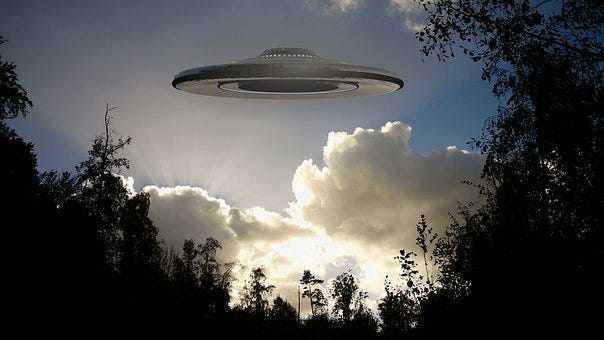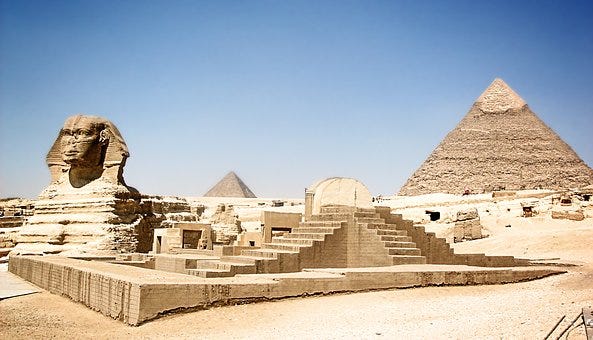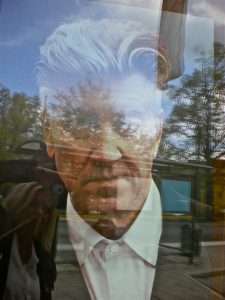
The first part of my title is a well known expression in scientific discussions. It was discussed in a recent Medium article by Gem Jackson who calls it the ‘Sagan Standard’ after the famous scientist, the late Carl Sagan, who coined it during the Cosmos TV series in 1980. Jackson describes it as “an essential tool for better thinking”, “a sensible rule, which lies at the heart of the scientific method, principles of legal proof and rational thought more generally. It takes into account that evidence alone is not sufficient to establish belief — the quality and quantity of evidence must be able to bear the weight of the claim being argued”.
It is very hard to argue against this, when expressed in those terms. Such statements are not without their difficulties, however. The main problem is, who gets to decide what is an extraordinary claim, and what constitutes adequate evidence? These should be completely objective, independent observers, who have consistently demonstrated the ability to think critically. Do such people exist, or is this just an ideal to be aspired to? We certainly would not want to leave such decisions to extreme skeptics, those obstinately resistant to persuasive evidence; this might well hinder the progress of scientific inquiry. More relevant to this article, is that an accurate description of Sagan? How objective and independent was he?
The context for his statement was the question of alien visitations. Here is the full quote: “What counts is not what sounds plausible. Not what we’d like to believe. Not what one or two witnesses claim, but only what is supported by hard evidence, rigorously and sceptically examined; extraordinary claims require extraordinary evidence”. Jackson elaborates: “Sagan argues that despite the thousands of witness testimonies, supporting claims that aliens have visited Earth, such a belief is so extraordinary the standard of proof is correspondingly increased”.
So here we have the belief of one skeptic being allowed to override the evidence provided by thousands of eye-witness testimonies. We therefore have to ask the question, is the belief in alien visitation really as extraordinary as Sagan claimed? (I am here having to assume that Jackson’s commentary is correct. He quotes Sagan as saying “not what one or two witnesses claim”, then continues: “Sagan argues that despite the thousands of witness testimonies…”)
I assume that these thousands of testimonies refer to UFO sightings, and those are not necessarily indicative of alien visitation. Let’s remind ourselves of what the acronym stands for, Unidentified Flying Objects. So these could be vehicles created either by humans or by aliens; I think that exhausts the possibilities.
These objects are often reported to move at speeds impossible for any known humanly created flying machine, change direction in ways impossible for any known humanly created flying machine, and fly silently, something which no known humanly created flying machine can do. Therefore, if these UFOs have been created and are being flown by humans, then some unspecified government or governments are involved in some truly amazing projects. Doesn’t the public have a right to know about this? What would be the secret agenda behind this? The most likely scenario would be the development of a programme of highly sophisticated weapons. A second possibility would be some kind of space travel programme they don’t want us to know about.
These scenarios are far-fetched — they would certainly be extremely extraordinary claims, requiring extremely extraordinary evidence — so the more likely alternative is that these vehicles are indeed the creation of aliens, since we have no idea what level of technological achievement they might have achieved.
By a strange coincidence, as I was reflecting on Jackson’s article in relation to Sagan, another Medium article (click here) appeared which also mentioned Sagan’s aphorism in relation to the UFO phenomenon. This was by Carolyn Brouillard. It is very interesting, and I recommend reading it in full.
On the principal question of whether the UFO or ET hypothesis is truly extraordinary, she quotes Professor David Deming: “A claim or theory is not ‘extraordinary’ solely because it is novel, unusual, or is in disagreement with human consensus… An ‘extraordinary’ claim is one that is contradicted by a massive amount of existing evidence”. On that basis Sagan would appear to be completely wrong, since he is arguing against alien visitation on the basis of his personal opinion that this is a novel or unusual claim, when in fact it is supported by a massive amount of evidence (thousands of witness testimonies).
She then goes on to agree with what I just wrote, that the ET hypothesis is the most credible explanation for UFOs: “In fact, answering the question of what else they could be if not a product of advanced intelligence is more problematic”. She then makes the case. Her first point is the appearance of deliberate engineering. She then makes a similar argument to mine above with more details: anti-gravity lift, sudden and instantaneous acceleration, hypersonic velocities without signatures, low observability or cloaking, and trans-medium travel. She argues that these objects are unlikely to have been engineered by human governments, and then reveals that she has been on two UFO Sighting Tours. On both occasions flying objects responded to telepathic and visual attempts to engage.
===========================================================================================
I’m now going to discuss in more detail (the late) Carl Sagan. He was involved in various SETI projects, the Search for Extraterrestrial Intelligence. The general idea is to scan for signals of any kind, more specifically radio signals, from other solar systems. Ufologists presumably find this project somewhat humorous, since they would argue that, if you want to find evidence of alien intelligence, then the best place to start looking, given the thousands of sightings, would be the Earth itself. After all, the basic claim of SETI is that, as far as we know, we are alone in the universe, but wonder if other similar civilisations might exist elsewhere.
Evidence that those involved in SETI seem to be wilfully blind is provided by Dr. Roger Leir in his book UFOs Do Not Exist: The Greatest Lie That Enveloped the World¹. I have chosen to mention this, rather than the many other available books by credible authors, because of his provocative, but ambiguous, title. When I first looked at it, I wondered whether the first part was a statement, and that UFOs were the greatest lie. It turns out that the other interpretation is intended; the greatest lie that has enveloped the world is that UFOs do not exist. The author gains credibility in that astronaut Edgar Mitchell has endorsed it by providing a preface where he writes: “the evidence that we have been visited by beings from some of those distant worlds is becoming overwhelmingly obvious to those who look carefully at the evidence” (p 5). Unlike Sagan, he clearly does not think that this is an extraordinary claim.
This overwhelming evidence has obviously escaped the attention of those involved in the SETI project. We are therefore left to wonder whether this organisation is merely a propaganda tool of NASA in particular, and the American government in general, whose purpose is to dupe the public into believing that ideas about UFOs and alien visitation are silly nonsense to be dismissed out of hand. It is not exactly a secret that this propaganda machine, known officially as Project Blue Book, existed. It was revealed in detail by Allen Hynek in his UFO Report². The cover describes him as “the leading Air Force consultant on Project Blue Book, and the world’s foremost expert on UFOs”. The book “distills over 12,000 sightings and 140,000 official Project Blue Book pages”, and “reveals what the Government suppressed and why”. (This book is a follow-up to his earlier The UFO Experience: a Scientific Inquiry³, which goes over similar material.)
In the 1960s Sagan had written “that interstellar space flight at ‘relativistic speeds’ (speeds near the speed of light) is a possibility”; he “calculated that interstellar visitors may encounter the solar system on an average of once every 10,000 years, with the last visit possibly in historical times”; he “speculated that records of such a visit might exist in Earthly oral tradition”; he “made his own amateur excursion into the realm of myth, folklore, ethnography, and anthropology to look for such a record”; he “seriously proposed a search for alien artifacts on the surface of the Moon and other planets in the solar system by means of high-resolution photography”; he suggested that this should be “done with support from a grant by NASA”⁴.
Fast forward nearly 20 years, and what do we find? Photographs have been taken of Mars which suggest a face carved in rock, and also pyramid structures. Attention was focused on one particular photograph, known as 70A13, which had been enhanced, and appeared to confirm this. Two researchers Vincent Dipietro and Gregory Molenaar did some scientific analysis, but got nowhere in their efforts to get published or make presentations. Sagan then offered to help by reviewing their material but, having done so, then wrote an article in Parade magazine in which he dismissed their work out of hand.
At this point Professor Stanley McDaniel enters the scene. He had become interested in the questions around the Mars photos, and had made some investigations of his own. This is how he summarises his conclusions up to this point: “As my study of the work done by the independent investigators and NASA’s response to their research continued, I became aware not only of the relatively high quality of the independent research, but also of glaring mistakes in the arguments used by NASA to reject this research. With each new NASA document I encountered, I became more and more appalled by the impossibly bad quality of the reasoning used. It grew more and more difficult to believe that educated scientists could engage in such faulty reasoning unless they were following some sort of hidden agenda aimed at suppressing the true nature of the data”.
He was especially appalled by Sagan’s article, which he describes as “the most shockingly blatant piece of disinformation I have ever seen: one written not by an obscure NASA Public Information employee, but by a prestigious member of the 1976 Viking Lander Imaging Team, Dr. Carl Sagan”. He was therefore moved to write a book on the whole subject The McDaniel Report⁵, from which the above quotes were taken (P xvi-xvii).
He later writes: “Among the efforts to discourage interest in the Martian anomalies, one stands out in particular. It involved Dr. Carl Sagan, a member of the 1976 Viking Lander Imaging Team and therefore a de facto spokesman for NASA on this topic. Dr. Sagan’s contribution is important not only for its medium, an article in a nationally distributed newspaper supplement, but also for its historical positioning, which gives it the appearance of a pivotal piece designed to discourage interest in the topic just as the data began to look impressive… The weight of Dr. Sagan’s considerable authority in the planetary science community may account for the otherwise inexplicable confidence placed by NASA in the many fallacious arguments documented here” (p 148).
McDaniel provides details of the history leading up to the article, which establishes exactly what Sagan knew in advance of writing: “This chronology establishes that on various occasions, starting at least one year prior to publishing the article in Parade magazine, Dr. Sagan was made aware of the nature of the investigation, the identities and qualifications of the investigators, the use of image processing techniques in the investigation, and the role of Viking frame 70A13 in confirming that the facial characteristics were not merely a ‘trick of light and shadow’ ” (p 149).
McDaniel then provides an analysis and critique of Sagan’s article. Since this is somewhat lengthy, I’ll begin by quoting his concluding summary, so that readers can get a quick impression of his opinion of Sagan’s work: “After having seen the report of the Independent Mars Investigation Team, and having viewed quality processed photos including 70A13, Dr. Sagan produced an article in a national news magazine containing a misleading, colorized and unidentified version of frame 70A13 which he presented as a disconfirming photo, He failed to name the investigators and omitted all reference to their qualifications, the data upon which their work was based, methods of photo enhancement used, and conclusions reached. Instead he promoted the perception that some ‘amateurs’, ‘zealots’, and a ‘science writer’, peering at low-resolution photos and unable to tell the difference between transmission errors and real data, imagined a ‘face’ on Mars simply because of some uncontrollable psychological compulsion, or because they are not intelligent enough to tell the difference between an eggplant and a face” (p 154).
The obvious consequence of his failure to name any of the investigators was that this prevented readers from checking on his statements; if they could have checked, they would have discovered the investigators’ professional qualifications.
Sagan had therefore “employed five main propaganda devices”; he had:
- failed to mention the serious research carried out on the subject
- engaged in ad hominem attacks
- presented a naïve psychological theory to explain why researchers mistakenly see a ‘face’ on Mars
- developed an overblown version of NASA’s ‘Happy Face’ argument
- displayed an “allegedly disconfirming photograph which acts as a substitute for the nonexistent frame in which, NASA alleged, the Face ‘disappears’. The photograph turns out to be a version of frame 70A13 that has been selected and printed in a way that minimizes the facial features” (p150).
McDaniel then elaborates on this material over four pages, giving all the relevant details. He describes this as Sagan leading his readers down a logical slippery slope, “a kind of effort to hypnotize the reader”. He concludes that the article “grossly offends the ethics of science reporting”. It “falls in the category now known as ‘debunking’ — undermining a serious inquiry into unusual phenomena by the use of propaganda methods”.
One further interesting detail on that theme is as follows. Sagan failed to mention the use of image enhancement which brought out the details in the photographs being investigated: “The use of an essentially unprocessed version of 70A13, with no mention of the analysis and enhancements performed on it by DiPietro and Molenaar, is something no scientist, acting responsibly, ought to allow — whether writing for a lay audience or a professional one” (p 155). Sagan even had a frame “already known to confirm the facial characteristics and to add significant detail” edited, therefore distorted, so it ended up being a frame represented by him as a disconfirming photo. Unsurprisingly, no records of the work done on this photo were retained by the organisation responsible, which was headed by Sagan. This can surely only be construed as a deliberate attempt to deceive.
McDaniel further adds: “Apologies are due, however belated, from Dr. Sagan to the researchers whose work he saw, and pointedly ignored, in his effort to lump those interested in the Martian anomalies with ‘amateurs’ and ‘flying saucer zealots’. There is no sign, however, that Dr. Sagan has mended his ways. As late as 1993, in a public lecture, Dr. Sagan is reported to have used the (same) ploy… as evidence that the imagery had been misinterpreted”.
Extraordinary though this may seem, despite this unrelenting and damning critique of Sagan, and therefore by implication of NASA, I understand that McDaniel later backtracked somewhat. He formed his own organisation called the Society for Planetary SETI Research, which stated that no NASA conspiracies existed, and that their attitude to the Cydonia (Face on Mars) issue had been honest but stupid, thus not a deliberate cover-up.
Therefore, just as Sagan by 1980 had completely distanced himself from his earlier statements advocating genuine search for extraterrestrial intelligence (not the SETI variety), so also McDaniel turned volte-face, reversing his damning conclusions. One wonders what could have made them both change their minds so drastically. Did they both receive a visit from the notorious Men in Black? Only joking.
Returning to my starting point, Gem Jackson asks what you say to people whose beliefs fly in the face of overwhelming evidence. He is referring to the many thousands of Trump’s supporters who believe, despite the lack of evidence, that the recent Presidential election was rigged. He could just as easily be saying that of Sagan, however. We can readily agree that truly extraordinary claims require extraordinary evidence. We now see, however, that the claim for the existence of UFOs, and therefore the strong possibility of alien visitation, is not extraordinary at all. On the contrary, it seems quite likely, otherwise why would NASA make such determined efforts to suppress the data. Sagan’s aphorism would therefore seem to have been merely a tool in NASA’s disinformation campaign.

APPENDIX
Some highly significant evidence has emerged recently. In December 2020 Haim Eshed, the head of Israel’s space security programme for nearly 30 years, now retired, stated publicly that the American government has been in communication, and has an agreement, with a “galactic federation” of aliens, but has not revealed this to humanity at large because it is believed that we are not yet ready. Indeed he claims that “aliens from all over the universe are already walking among us”.
Perhaps not the last point, but his first claim is believed by many so-called conspiracy theorists, whose suggestions can easily be, and usually are, dismissed. It’s not quite so easy to dismiss this when it is said by a space security boss. So, what reasons do we have to disbelieve him? (What follows is based purely on this newspaper article. I have not checked the details any further.)
One of his claims is superficially hard to accept, that the agreement includes an “underground base in the depths of Mars”, where American astronauts and alien representatives mingle. That is hard to believe if we assume that the Americans were transported to Mars by NASA, which would have required a cover-up and deception on a grand scale. I assume therefore that, if the claim is true, they must have been taken there secretly in some of the thousands of UFOs that apparently roam around our planet.
A second objection is that Eshed’s claims are made in a new book The Universe Beyond The Horizon. It is possible therefore that he is making this all up, in order to boost his income in retirement. This seems somewhat unlikely to me; why would such a distinguished and reputable scientist want to ruin his reputation by descending to the level of a crackpot conspiracy theorist? This accusation has nevertheless been made by Nick Pope, a former British Ministry of Defence UFO investigator, who has been quoted as saying that the claims were either a “practical joke or publicity stunt to help sell” Mr Eshed’s book. We should note that this is presumably pure speculation without any inside knowledge, a typical debunker’s tactic.
We might wonder what motivated Mr. Eshed to break ranks and reveal what is presumably intended to be a closely guarded secret. His side of the story is that he now has “nothing to lose” having received his “degrees and awards”, adding that his claims previously would have been ridiculed, but that now the “academic landscape has changed and because he was a well-respected figure in academia”. Are these good enough reasons to break presumed oaths of secrecy and threaten global security? I’m not sure.
It is speculated or believed by ufologists (for example on Medium Bryce Zabel, many articles including this one, and Carolyn Brouillard) that we are on the verge of a spectacular disclosure regarding UFOs and ETs. Perhaps Eshed has been instructed to prepare the ground with his revelation.
=========================================================================================
Footnotes:
- The Book Tree, 2014
- originally 1977, my copy Souvenir Press, 1998
- Corgi, 1974
- as quoted in McDaniel’s book. The source is ‘Direct Contact among Galactic Civilizations by Relativistic Interstellar Spaceflight’, 1963, reprinted in The Quest for Extraterrestrial Life, ed. Donald Goldsmith, University Science Books, 1980, p 213.
- North Atlantic Books, 1993







